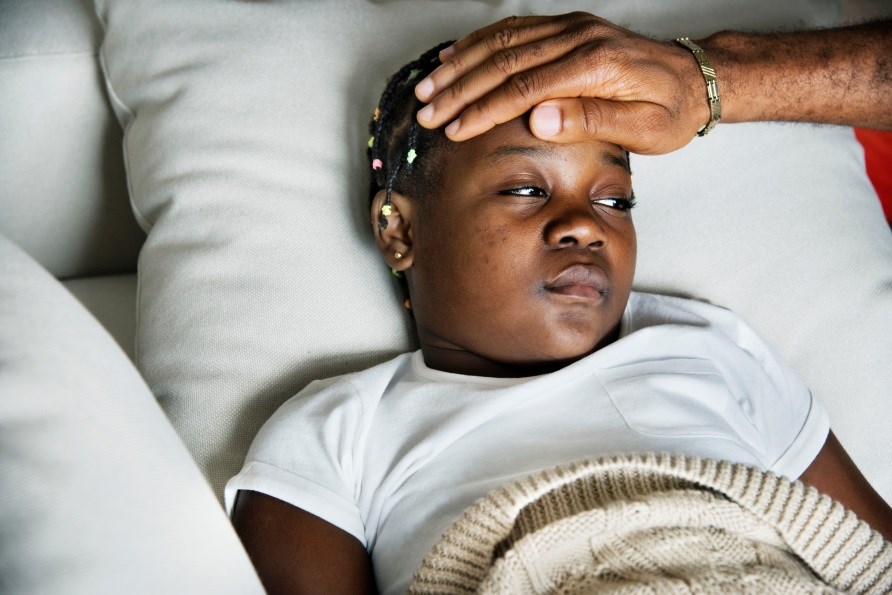How to Protect Yourself Against Viruses and Bacteria
Colds, flu and other illnesses are easily spread between people, but there is a lot you can do to protect yourself from being infected by both viruses and bacteria.

Here’s how to avoid infection
Many of our most common illnesses come from a virus or a bacterium, and they come in thousands of variants. Just one common cold virus comes in hundreds of variants, making it difficult for the immune system to be prepared to deal with them all. However, there are some things you can do yourself to minimize the risk of becoming infected.
1. Strengthen the immune system
The immune system is your most important protection against many types of viruses and bacteria, and there is lots you can do to strengthen the immune system yourself. Top up with vitamins that contain trace elements that are important for the cells of the immune system. One of the most talked about vitamins that also acts as an antioxidant is vitamin C, but also vitamin D and the mineral zinc act as antioxidants. In addition, it is important to take care of your gastrointestinal health, as a large part of the immune system is based there. Don’t forget to make sure to eat a varied diet, sleep properly and drink water.
Do face masks help protect against viruses?
No, face masks alone rarely help prevent the spread of a virus. On the contrary, some research has shown that people who wear face masks may be at a greater risk of getting sick by touching their face when they put on and take off the mask or adjust it. The hands are often carriers of bacteria and viruses and these are then spread to the mucous membranes of the face. However, face masks can still limit how much those who are infected spread the infection around them, as they catch many of the droplets that spread when we cough or sneeze.
2. Practice good hygiene
Remember to wash your hands thoroughly and often, especially after using the toilet, before meals and if you have been out around many people. Use soap and warm water and feel free to follow up with hand sanitizer afterwards. Hand sanitizer, however, only helps against bacteria and certain viruses, so if possible it is always best to use soap. You can also keep your distance from people coughing or sneezing and avoid large crowds during cold season. Also, avoid touching your face, especially if you have not washed your hands beforehand. Those who are ill should cough and sneeze into their elbow to reduce the spread of infection. Here you will find instructions for how to make your own hand sanitizer.
Tip! Be thorough when washing your hands. Don’t forget to use soap between your fingers, on the outside of the thumb and around the cuticles. Soap up your hands for at least 20 seconds and then rinse with warm water.
3. Clean surfaces that may spread infection
Since some bacteria and viruses can survive on tables, handles and buttons for a long time, it can be a good idea to clean these surfaces, especially in the home. Disinfect the surfaces using, for example, colloidal silver, which has bactericidal properties. A good tip is to mix a solution of water and colloidal silver in a spray bottle for effective cleaning. Colloidal silver can also be used to purify water. You can also use detergent, chlorine or soap to clean the house after someone in the family has been ill. Remember to clean all surfaces that you often touch - lamp switches, the flush button on the toilet and the door lock are easy to forget.
Tip! Our computers, tablets and phones can accumulate large amounts of bacteria, so feel free to clean these as well. A damp cloth with water and detergent works great.
What is a virus?
A virus is a microorganism that cannot multiply or spread on its own. The virus must instead have access to living cells in, for example, a human and multiply from there. The result when a virus takes root in the body is that an infection occurs, such as when you suffer from a cold, flu or winter vomiting bug. It is possible to be vaccinated against some viruses and there are medicines for some, but they cannot be treated with antibiotics.
What is bacteria?
A bacterium is larger than a virus and is a single-celled organism. It can multiply and spread on its own and can survive and divide outside living cells, for example on a door handle. Bacteria, like viruses, cause infections in the body, but these can be effectively treated with antibiotics (such as penicillin). Many infections also heal completely without medication. Some illnesses caused by bacteria are salmonella, streptococci and chlamydia. Special forms of bacteria are also found naturally in the body, for example in the stomach, intestines and mouth, where they protect against external bacteria that try to enter the body.

Both viruses and bacteria can lead to infections in the body.
How are viruses and bacteria spread?
Viruses and bacteria can be spread in a similar way, but different viruses and bacteria can result in different levels of infection. The winter vomiting bug (Calicivirus), for example, spreads very easily between humans. Some of the most common ways in which infection is spread are:
- direct contact between a sick and a healthy person when they touch, shake hands or kiss. It is common for skin infections such as smallpox to spread through direct contact.
- indirect contact, for example via a door handle. How contagious the contact surfaces are depends, among other things, on the type of virus/bacterium, humidity and how many people touched the surface. The infection enters the body by a healthy person first touching the infected surface and then one of the body's mucous membranes.
- droplet infection, i.e. when an infected person coughs, vomits or sneezes so that small drops are spread over a large area. The droplets contain virus particles that either end up in the eyes or mouth of healthy people and thus enter the body directly, or land on the hands and are introduced into the body when the person touches their mouth, nose or eyes. The droplets can also fall on objects and surfaces which can then cause indirect contact infection.
- airborne infection, which is actually a kind of extension of droplet infection. When a sick person coughs, sneezes or vomits and the droplets are spread in the air, they can sometimes remain in the air for a long time, be carried away by ventilation or moved with swirling floor dust. Healthy people inhale the particles and become infected, even though several hours have passed. This is especially common in vomiting illnesses.
Other types of infection are blood-borne infection, insect-borne infection and intestinal infection. The most effective ways to avoid all these types of infections are to wash your hands often and thoroughly, to avoid touching your face and to avoid close contact with sick people.

